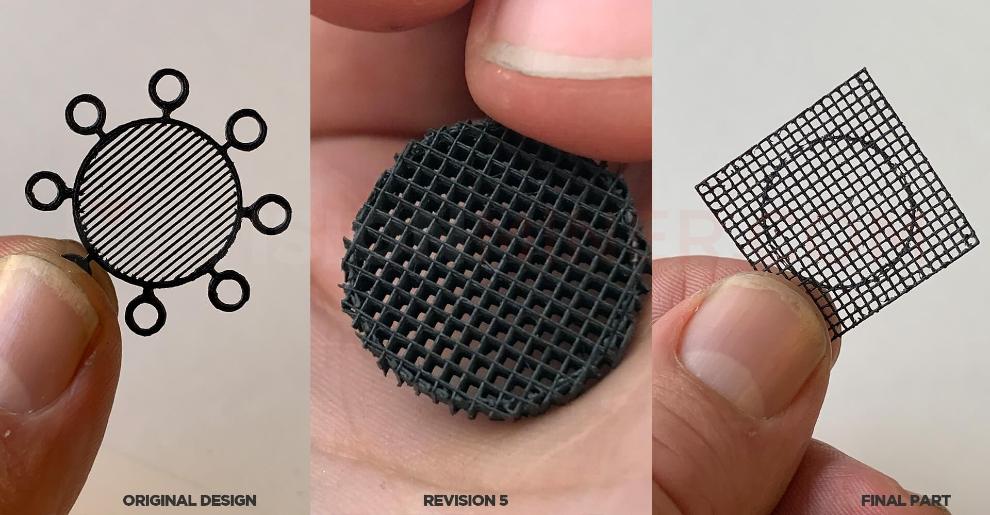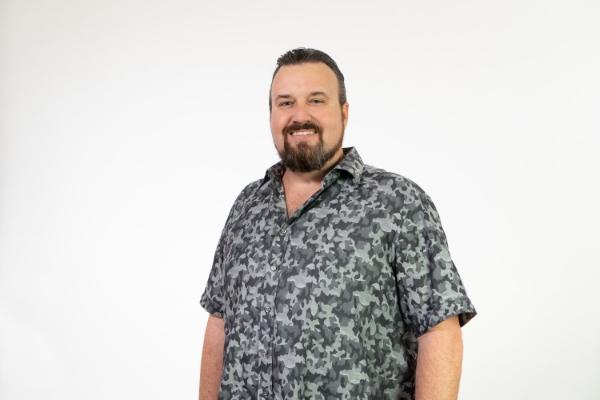- FMA
- The Fabricator
- FABTECH
- Canadian Metalworking
Our Publications
Categories
- Additive Manufacturing
- Aluminum Welding
- Arc Welding
- Assembly and Joining
- Automation and Robotics
- Bending and Forming
- Consumables
- Cutting and Weld Prep
- Electric Vehicles
- En Español
- Finishing
- Hydroforming
- Laser Cutting
- Laser Welding
- Machining
- Manufacturing Software
- Materials Handling
- Metals/Materials
- Oxyfuel Cutting
- Plasma Cutting
- Power Tools
- Punching and Other Holemaking
- Roll Forming
- Safety
- Sawing
- Shearing
- Shop Management
- Testing and Measuring
- Tube and Pipe Fabrication
- Tube and Pipe Production
- Waterjet Cutting
Industry Directory
Webcasts
Podcasts
FAB 40
Advertise
Subscribe
Account Login
Search
California firm is a ‘one-stop shop for anything high temp’
‘High-temp polymers is all we’ve ever done since we’ve been in business’
- By William Leventon
- July 20, 2020
- Article
- Additive Manufacturing

Vision Miner additively manufactured a screen for NASA that was designed to protect spacesuits from airborne particles. The shop used a filament-style printer to additively manufacture the carbon-fiber PEEK part, which features a 0.25-mm wall thickness. All images: Vision Miner
Are you in need of something—anything—related to 3D-printing parts from high-temperature polymers? If you are, Vision Miner LLC probably has it.
Based in Costa Mesa, Calif., Vision Miner bills itself as “a one-stop shop for anything high temp,” according to Patrick Smith, the company’s CEO and founder. The firm offers 3D printing and consulting services, materials, machines, and related products to those interested in working with polymers that provide exceptional heat and chemical resistance, as well as high strength. The materials include PEEK, PEKK, PPSU, Ultem, and carbon-fiber composites.
Smith originally got into 3D printing to prototype parts for a drone manufacturing company he owned. But when he put heavy payloads on gimbals printed with ABS, the plastic would break.
“I was getting frustrated, so I started researching 3D-printable plastic materials that are as strong as metal,” he recalled. “That was when PEEK was just coming out to the general public. We dove into it and found out it’s strong as hell but a pain to work with and print. But now that we’ve got it mastered, we love the material.”
Printing and Support
Vision Miner’s main offerings are a printing service for parts made of high-temperature materials and support for firms trying to print the materials themselves. Specializing in fused filament fabrication, the printing service has four to 10 printers operating at any given time, according to Robert Lent, the company’s vice president and cofounder. The work is mainly rapid prototyping and low-volume production of parts for the medical, aerospace, and energy industries.
After 3D-printing parts for customers, Vision Miner starts educating them about the advantages of bringing the work into their own plants. “We tell them, ‘You now know the process, and you can get a machine for as little as $7,000. If you don’t farm the work out, you could save quite a bit of money,’” Smith said.
How much? A company that needs to print 1,000 parts a year from high-temperature materials might pay a printing service $25 a part, according to Lent. But if the company prints the parts itself, it might be able to make them at a cost of $2 a part. Over the course of a year, he noted, the savings are usually much more than the cost of the printer and everything else involved in doing the job in-house. And oftentimes the savings even exceed the cost of hiring a full-time person to run the printer.
The majority of Vision Miner’s business is selling machines manufactured by others to firms that want to tackle 3D printing of high-temperature materials themselves, and then supporting the machines it sells and teaching people how to use them properly. It offers AON3D, Cincinnati, Colossus, FlashForge, and Intamsys printers.
According to Smith, the cost of Vision Miner’s service packages ranges from a few hundred dollars a month—to answer basic questions—all the way up to $5,000 for one-on-one consulting packages that provide training on a machine.
In addition, Vision Miner usually keeps all replacement parts in stock for the machines it sells. It also supplies the engineering materials the machines run, as well as nozzles and other accessories.

The materials Vision Miner prints parts from include carbon-fiber nylon, Ultem 9085, and carbon-fiber PEEK.
“We’re not the cheapest in town by far, but our service and products are top-notch,” Smith said. “We can usually get you up and running a lot quicker than if you bought a material on Amazon.”
As for competition in the additive manufacturing space, Smith believes the company’s focus on just high-temp materials provides an advantage. “I don’t think we have any competitors because we specialize in high-temp polymers, which is all we’ve ever done since we’ve been in business,” he said.
Help for Practitioners
For companies new to 3D printing, Vision Miner offers a video on its website called “3D Printing with Failure in Mind.” The idea is that in most cases, iteration is the key to successful printing.
“When you print a part, it’s probably not going to work perfectly the first time,” Lent said. “So you examine it, change a couple of settings, and print it again. Maybe you get it that time—or maybe you need to do it once more or twice more or 10 times more. It’s like trying to make the perfect dish. It might take a couple of tries with different spices, but it’s going to work eventually.”
As for printing with high-temperature materials, it’s a specialized process that presents its own unique set of challenges. According to Lent, the biggest of these is drying the filament and keeping it dry. Materials like PEEK and Ultem absorb so much moisture that layer-adhesion problems can arise, as can diminished mechanical properties caused by the presence of air bubbles in the part.
Therefore, an effective filament drying process is needed. Vision Miner’s methodology includes baking filament spools at 120 degrees C for 12 hours and then putting the spools in a vacuum chamber for about one minute.
There’s also the problem of getting high-temperature materials to stick to the print bed. While users of normal thermoplastics, like PLA, can print right on the bed, high-temperature polymers like PEEK and Ultem will peel up because of shrinkage, Smith said, pointing out that forces pulling these materials off the bed can reach 30,000 PSI.
Vision Miner looked for a way to solve the problem. Unable to find a solution, a frustrated Smith eventually hired a renowned scientist in the polymer industry.
After eight months, the scientist developed a liquid that improves adhesion when applied to a print bed. The patent-pending formulation, called Nano Polymer Adhesive, keeps the first printed layer from peeling up, said Smith.
The adhesive “works with PEEK and almost everything we have tried,” he said. “It’s almost too good to be true.”
About the Author

William Leventon
(609) 926-6447
About the Publication
- Podcasting
- Podcast:
- The Fabricator Podcast
- Published:
- 04/16/2024
- Running Time:
- 63:29
In this episode of The Fabricator Podcast, Caleb Chamberlain, co-founder and CEO of OSH Cut, discusses his company’s...
- Trending Articles
- Industry Events
16th Annual Safety Conference
- April 30 - May 1, 2024
- Elgin,
Pipe and Tube Conference
- May 21 - 22, 2024
- Omaha, NE
World-Class Roll Forming Workshop
- June 5 - 6, 2024
- Louisville, KY
Advanced Laser Application Workshop
- June 25 - 27, 2024
- Novi, MI



























